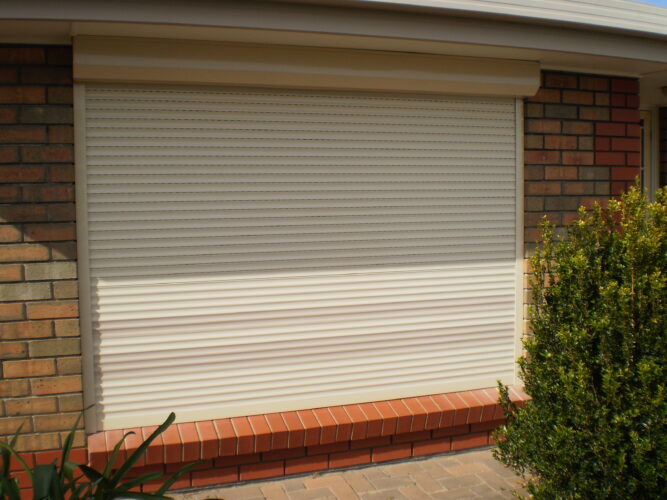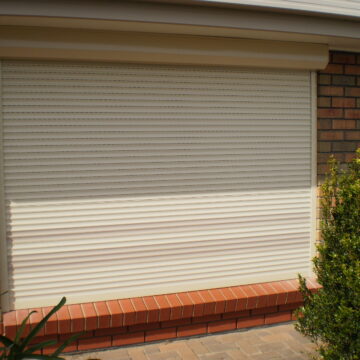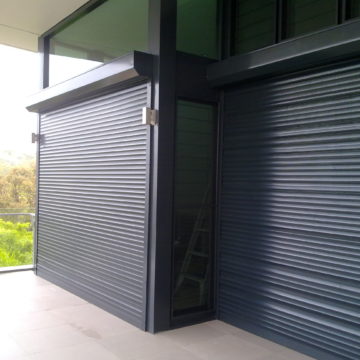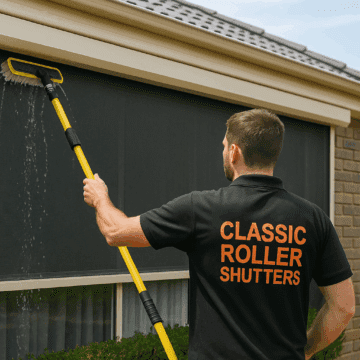Roller window shutters are external covers made from interlocking aluminium slats that roll up into a compact headbox above your window or door. Operated by a winder, strap, battery, or electric motor, they let you control light, heat, noise, privacy and security with a single move. For Adelaide homes, that means cooler rooms during hot northerlies, better insulation on cold nights, and a stronger barrier against break‑ins and storm debris—without sacrificing street appeal.
This guide gives you everything you need to choose the right shutters for your place in Adelaide. We’ll explain the benefits in local conditions, the differences between slat profiles and materials, and whether manual or electric makes sense for your budget and lifestyle. You’ll see typical costs and what drives the price here in SA, how to compare quotes and use price calculators, and when DIY stacks up versus professional install. We’ll also cover measuring for new builds and retrofits, smart controls and power options, maintenance and upgrades, SA regulations and bushfire considerations, design choices, timelines—and how to pick a trusted local supplier.
Benefits of roller window shutters for Adelaide homes
Adelaide’s climate swings from scorching summers and dust‑laden northerlies to chill winter nights and the odd thundery blast. Quality roller window shutters give you control back. By sealing over glass—the weakest point in most homes—they improve insulation, dampen street noise, and add a tough physical barrier without bulky security grilles. The result is cooler rooms, warmer nights, and a calmer, more private home year‑round.
- Thermal control: Cut heat gain in summer and reduce heat loss in winter.
- Security boost: A visible, robust deterrent against forced entry and opportunistic break‑ins.
- Noise reduction: Soften traffic, aircraft and neighbourhood noise for better sleep.
- Light and UV management: Darken bedrooms and protect furnishings from fading.
- Weather protection: Shield glass from wind‑borne debris and sudden storm fronts.
- Privacy on demand: Block sightlines without losing the option of daylight and views.
Up next, we’ll unpack the types, materials and slat profiles so you can match performance to your budget and façade.
Types, materials and profiles explained
Not all roller window shutters are built the same. The right choice depends on what you want to solve first—heat, noise, privacy, or security—and the look you’re chasing. In Adelaide, most homes use aluminium shutters because they’re light, durable and cope well with coastal air and hot summers, but the way the slats are made changes performance and price.
Materials
Aluminium comes in two common builds for window shutters, each with a different feel and purpose. Both roll neatly into a compact headbox and can be colour‑matched to your façade in popular Colourbond‑like colours.
- Insulated roll‑formed aluminium: Twin‑skin slats filled with foam for better thermal and noise performance, ideal for bedrooms and street‑facing windows. Lighter, quieter and typically the most cost‑effective choice for suburban homes.
- Extruded aluminium: Thicker‑walled, heavier‑duty slats for larger openings or when increased strength and security are priorities. Expect a firmer feel, higher wind resistance and a step up in price.
Profiles and options
Slat profile and cut‑outs influence light, airflow and privacy. Think about how you use each room and the orientation of your windows to pick the right combination.
- Solid blackout slats: Maximum room darkening and privacy; great for shift workers, media rooms and nurseries.
- Ventilation slots/perforations: Allow controlled daylight and airflow when partially lowered; handy for living areas that still need breeze.
- Specialty options: Bushfire‑focused configurations and ember‑guarding accessories for properties in risk zones, plus narrower slats for small windows or bay shapes to maintain clean lines.
Manual versus electric: which is right for you?
Choosing between manual and electric for your roller window shutters comes down to how often you’ll use them, window size and access, and whether you want automation. Manual strap or winder systems are simple, cost‑effective and work regardless of power. Electric motors (wired or battery) add push‑button convenience, smoother control on larger spans and easy grouping; battery units keep working during outages and avoid chasing cabling through finished walls.
- Choose manual when:
- Standard, easy‑reach windows on the ground floor
- You want simple reliability with minimal components
- Upfront budget is the main driver
- Choose electric when:
- Large or hard‑to‑reach openings (sliding doors, bay windows)
- Frequent daily use (east/west‑facing bedrooms, living areas)
- Group control and remotes matter and you want no dangling straps
Already have manual shutters? Many Adelaide owners upgrade to motors later; Classic can handle motor upgrades and replacements when you’re ready.
DIY versus professional installation
If you’re handy with tools, DIY roller window shutters can be tempting—there are kit options and spare parts available, and you’ll save on labour. Just remember shutters must run true: a headbox that’s a few millimetres out or tracks that aren’t plumb can cause binding, noisy operation and premature wear. Hard‑wired motors also need a licensed electrician in SA, while battery motors and manual systems avoid fixed wiring.
- DIY suits when: You’re fitting standard‑size ground‑floor windows; have clear access; are confident measuring, drilling and sealing; and you’re installing manual or battery‑powered shutters on a flexible timeline.
- Go professional when: You’ve got large spans, upper‑storey installs, bays/corners, tight eaves or services nearby; want perfect alignment and weather‑sealing; need multiple shutters synced; or you’re using wired motors that require an electrician. Classic handles full install, motor upgrades and repairs for a factory‑finish result.
Whichever route you choose, include install costs in your budget—next, we break down Adelaide pricing.
Costs and pricing in Adelaide
What should you budget for roller window shutters in Adelaide? Public cost guides suggest basic shutters start from roughly a few hundred dollars per window, with many jobs landing around $300–$1,000 per shutter depending on size and operation. Motorisation, larger spans and installation complexity add to the total. Local, factory‑direct suppliers can keep pricing sharp, and some online calculators provide instant estimates (often including GST and delivery) to help you plan.
Quick calc: Total = Shutter (size × profile) + Motor/controls + Installation + Electrical (if hard‑wired) + Options
- Size and number: Bigger openings and more windows increase material and time.
- Slat type: Insulated roll‑formed is cost‑effective; extruded adds strength and price.
- Operation: Manual is cheapest; battery or wired motors add for convenience and grouping.
- Installation complexity: Upper storey, tight eaves, bays or masonry can require extra labour/equipment.
- Electrical scope: Hard‑wiring needs a licensed electrician; battery avoids cabling.
- Finish and colour: Premium colours, headbox/tracks selections may carry surcharges.
- Add‑ons: Remote handsets, smart hubs, timers and bushfire‑focused accessories impact price.
Ask for fully itemised, GST‑inclusive quotes so you can compare like‑for‑like between suppliers.
How to compare quotes and use price calculators
To compare quotes for roller window shutters, fix an identical spec. Ask every Adelaide supplier to price the same sizes, slat profile and operation—so you’re not mixing manual with motorised or insulated with extruded. Confirm what’s included in supply, installation and electrical, with GST itemised.
Use online price calculators for a quick sense check—many show instant, GST‑inclusive kit pricing and delivery. Test size, profile and motorisation to see cost drivers, then request a site‑verified, written quote confirming install method, access, power requirements and lead time.
- Spec & materials: profile, colour, headbox, guides.
- Operation & controls: manual/battery/wired; remotes.
- Electrical scope: electrician, cabling, power points.
- Installation/access: upper storey, scaffolding, masonry.
- Warranty & service: parts, labour, local support.
- Compliance: wind rating, bushfire notes.
- Price: GST‑inclusive, itemised, lead time.
Common mistakes to avoid when buying roller window shutters
Most issues with roller window shutters show up long after install: rattling, binding, leaks, poor darkening or blinds you stop using. The cause is usually the buying decision. Avoid these common traps and you’ll get the security, insulation and convenience Adelaide homes expect—without cost blowouts or compromises.
- Wrong material/profile: Match slat type and strength to span, use and security needs.
- Guessing sizes: Confirm reveal vs face fit, headbox depth and guide clearances.
- Ignoring site conditions: Note wind exposure and local bushfire considerations before you choose.
- Overlooking electrical scope: Hard‑wired motors require a licensed electrician and planned cable paths.
- Comparing apples to oranges: Demand itemised, GST‑inclusive quotes with access and disposal costs.
- Forgetting controls/automation: Size motors correctly; plan group control, timers or smart upgrades.
- Colour mismatches: Don’t choose off a screen—check physical swatches against gutters and frames.
Measuring and planning for new builds and retrofits
Good measurements and a simple plan save money and headaches with roller window shutters. For new builds in Adelaide, think ahead: allow space for the headbox and guides, decide on reveal or face fit, and map power if you’re going electric—ideally before plaster goes on. Classic can quote straight from your floor plans and window schedule, then fine‑tune on site. For retrofits, careful measuring and noting obstacles ensures a neat, rattle‑free install.
- Confirm fit type: Reveal (between) for a tucked look; face fit (on wall) for maximum coverage and weathering.
- Headbox allowance: Ensure there’s clearance under eaves or fascias; note any gutters, lights or cameras.
- Measure smart: Width at top/middle/bottom; height left/right; note the smallest; check diagonals for squareness.
- Spot obstacles: Window winders, security screens, taps, pipes, AC heads, awnings and flyscreen tracks.
- Substrate & access: Brick, render or cladding affects fixings; note upper‑storey access or scaffolding.
- Power planning: For motors, mark safe cable paths and switch/isolator locations early; battery avoids hard‑wiring.
- Room use & orientation: Bedrooms may need blackout; east/west fronts often benefit from daily automation.
Smart controls, power options and automation
Smart controls turn roller window shutters into set‑and‑forget comfort. Pick power first: hard‑wired motors suit daily use and larger spans; battery motors avoid cabling and simplify retrofits, operating through outages when charged. Add control layers—remotes, wall switches, schedules and groups—so east/west rooms close for heat while bedrooms wake with daylight. Classic can upgrade existing manual shutters to motors when you’re ready.
- Power options:
- Hard‑wired: Reliable for heavy use; needs cabling and a licensed electrician.
- Battery: Quick install, no wall chasing; recharge as needed and keep going during outages if charged.
- Controls and automation:
- Remotes/wall switches: Straightforward everyday use.
- Groups and schedules: Move rooms together; run sunrise/sunset routines.
- Smart hub/app: Centralise control and create routines; confirm compatibility before purchase.
Note: fixed wiring in SA must be done by a licensed electrician. Ask for itemised pricing for motors, controls and any hub to compare like‑for‑like.
Repairs, maintenance and upgrades
When roller window shutters start to rattle, bind, or stop halfway, it’s usually dirt in the guides, tired straps, misalignment or a motor nearing the end. A little routine care keeps them quiet and weather‑tight, and when they need attention, Classic’s dedicated Adelaide repair division services all brands, replaces motors and can upgrade manual units to electric.
- Maintenance basics: Gently wash slats and guides, vacuum channels, then use a light dry‑silicone in guides (never oil). Check fixings, bottom‑bar stops and clear debris from the headbox. Avoid pressure washing.
- When to book repairs: Frayed/snagging straps, slipping winders, jerky or noisy travel, shutters sagging or not locking, water ingress, or remotes/battery packs failing.
- Popular upgrades: Retrofit motors (battery or hard‑wired), replace aging tubular motors, add group controls/timers/smart hub, swap damaged slats or tired guides, and refresh manual controls or weather seals.
Regulations, safety and bushfire considerations in SA
Roller window shutters should be specified and installed with compliance and safety front of mind. In South Australia, any fixed wiring for motors must be carried out by a licensed electrician. In bushfire‑prone areas, shutters can help reduce radiant heat and ember entry, but they are not a standalone fire solution—treat them as part of a broader, house‑wide strategy.
- Electrical compliance: Use a licensed electrician for hard‑wired motors, switches and isolators. Confirm RCD protection and a safe cable path before walls are closed.
- Egress and emergencies: Ensure bedrooms retain a safe exit. Favour solutions you can operate from inside during outages (e.g., battery operation). Avoid permanently locking exit routes.
- Wind and fixings: Ask for appropriate fixings for your site exposure, especially upper storeys and coastal locations. Correct anchoring reduces rattle and blow‑outs in storms.
- Bushfire readiness: Choose metal slats and tight‑fitting guides; close ventilation slots on high‑risk days; keep headboxes and tracks free of leaves and debris to limit ember catch.
- Council/strata considerations: For heritage overlays or shared façades, get written approval before fitting external shutters.
- Documentation: Request itemised, GST‑inclusive quotes plus written warranties and compliance notes for product and installation.
If you’re unsure about bushfire risk or approvals, speak with your builder or certifier early in the planning stage.
Design, colours and curb appeal
Well‑chosen roller window shutters can sharpen your façade while delivering performance. Aim for a clean, consistent look across street‑facing windows: align headboxes under eaves, keep guides plumb, and choose colours that either blend with frames and gutters or provide a deliberate contrast. Most Adelaide homes lean on Colourbond‑like palettes for easy matching, but always view physical swatches against brick, render and trim in daylight to avoid surprises.
- Match or contrast: Pair guides/headbox to window frames; slats to wall colour—or flip for a bold trim effect.
- Keep it consistent: Repeat colours and fit type across the elevation for a cohesive street view.
- Choose the fit look: Reveal fit is minimalist; face fit adds shadow lines and extra coverage.
- Select the silhouette: Square/compact headboxes suit modern lines; softer profiles complement heritage.
- Mind the details: Colour‑match screws, caulking and visible cables; specify neat isolator positions.
- Consider scale: Narrower slats and slim guides read lighter on small windows and bays.
- Plan coordination: Tie shutter colours to gutters, fascia and door hardware for a curated finish.
Timelines, lead times and the installation process
Adelaide homeowners usually ask “how long will it take?” Lead time for roller window shutters varies with season, the number of openings, slat profile, colour selection and whether electrical work is required. Factory‑direct manufacturing in Adelaide helps reduce freight bottlenecks and keeps jobs moving. New builds run best when shutters are quoted from floor plans and power provisions are locked in before plaster; retrofits typically follow a straightforward measure–manufacture–install sequence.
- Enquiry and consult: In‑home visit or quoting from plans to confirm goals and specs.
- Final measure: Site check for exact sizes, fit type and access.
- Written quote: Itemised scope, inclusions and installation notes for approval.
- Manufacture: Local production of slats, headboxes, guides and colour finish.
- Pre‑install check: Confirm access, heights, and electrical readiness (if motorised).
- Installation day: Fit guides/headbox, align, seal and test smooth travel.
- Commissioning and handover: Licensed electrician (if hard‑wired), program remotes/groups, care and warranty brief.
Tip: choose colours early, keep access clear, and coordinate any electrical work ahead of install to keep your timeline on track.
How to choose a local supplier in Adelaide
Picking the right Adelaide supplier is the difference between shutters you love and shutters you tolerate. You want a partner who measures carefully, manufactures accurately, installs neatly, and stands behind the job. Focus on evidence of local capability, transparent pricing, proper electrical compliance, and after‑sales support—not just the lowest upfront number.
- Local manufacturing/factory‑direct: Faster lead times, better colour matching; showroom helps.
- In‑house install and electricians: One accountable team; licensed for hard‑wired motors.
- Itemised, GST‑inclusive quote: Sizes, profiles, operation, install, electrical, warranties, lead time.
- Quoting from plans + re‑measure: Ideal for new builds; avoids surprises.
- Repair and upgrade division: Motors, parts, all‑brand servicing for long‑term support.
- Right product range: Insulated vs extruded, manual/battery/wired, smart control options.
- Compliance know‑how: Wind exposure, egress, bushfire notes; electrical certificates provided.
- Proven track record: Recent local installs, photos, consistent reviews.
- Clear warranties and response: Parts and labour coverage; simple claim process.
- Handover and care guides: Programming, cleaning, and maintenance explained.
Next, here’s how to wrap up your plan and move forward confidently.
Next steps
You now have the essentials to choose smarter: materials and profiles, manual vs electric, DIY vs pro, cost drivers, planning, compliance and upkeep. The rest is execution. Fix your spec, measure accurately and partner with a local supplier who will stand behind the install and support you long‑term.
- List each opening; pick fit and operation; note obstacles and power.
- Use calculators for ballpark; request itemised, GST‑inclusive quotes with lead times.
- Book final measure; lock colours; schedule install and any electrical.
In Adelaide, get factory‑direct advice and a free in‑home quote from Classic Roller Shutters Adelaide; we also upgrade motors and repair all brands.




